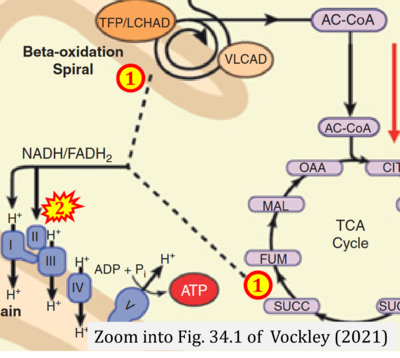Vockley 2021 Cambridge Univ Press
| Vockley J (2021) Inborn errors of fatty acid oxidation. In: Suchy FS, Sokol RJ, Balistreri WF (eds) Liver disease in children. Cambridge Univ Press:611-27. https://doi.org/10.1017/9781108918978.034 |
» Section IV - Metabolic liver disease, Partial Access
Vockley Jerry (2021) Cambridge Univ Press
Abstract: Mitochondrial fatty acid β-oxidation (FAO) is an essential component of energy production and homeostasis in humans. During periods of limited glucose supply, FAO in the liver provides energy for hepatic function and the acetyl-CoA substrate needed for hepatocytes to synthesize and release ketone bodies into circulation. Ketone bodies provide an alternative energy substrate for peripheral tissues when glucose supply is limited. Other tissues such as skeletal and cardiac muscle rely on FAO for energy production. The oxidation of fatty acids can provide up to 80% of the energy requirements for cardiac and skeletal muscle while sparing glucose for use by the brain and CNS during moderate exercise, fasting, or illness. Disorders in the ability to use fatty acids for energy production manifest during periods of increased energy demands or reduced caloric intake.
Correction: FADH2 and Complex II
- FADH2 is shown as the substrate feeding electrons into Complex II (CII). This is wrong and requires correction - for details see Gnaiger (2024).
- Gnaiger E (2024) Complex II ambiguities ― FADH2 in the electron transfer system. J Biol Chem 300:105470. https://doi.org/10.1016/j.jbc.2023.105470 - »Bioblast link«
Labels:
Enzyme: Complex II;succinate dehydrogenase
Pathway: F


